CarEdge saved me over 4,500 dollars on a brand new Honda Pilot. I can't say thank you enough.
Price intelligence
Find a wide range of vehicle listings with market insights on new and used listings near you.


Help us personalize your CarEdge experience — it only takes a second.
Your answers help us personalize your CarEdge journey — we’ll follow up with tips and next steps that match your buying timeline.

There’s a massive transition happening before our eyes, but it’s one that is getting harder to detect by the day: the rise of artificial intelligence (AI). We’re taking a close look at a rapid change that’s already transforming the auto industry: cars with AI. In 2024, three leaders are taking bold steps to put AI in cars: Tesla, Mercedes-Benz, and Volkswagen. Here’s how the big three are putting machine learning into the driver’s seat.

Tesla has been a household name in the world of electric vehicles and autonomous driving since first launching Full Self-Driving (FSD) in 2020. The company’s Autopilot system is one of the most advanced driver assistance systems available today. Utilizing NVIDIA-powered AI, Tesla’s FSD technology aims to enable fully autonomous driving, allowing cars to navigate complex environments with minimal human intervention.
In 2024, all Tesla models include Autopilot, which features limited AI-powered autonomous driving, such as interstate cruising and lane changes. Tesla’s Full-Self Driving package is an $8,000 add-on, and includes the following capabilities:
Tesla continues to lead the pack by constantly updating its AI capabilities through over-the-air software updates, enhancing everything from traffic sign recognition to full autonomous navigation. But something has changed in recent years: Tesla is no longer alone in the automotive AI space.
Here’s a look at the most serious competition today.
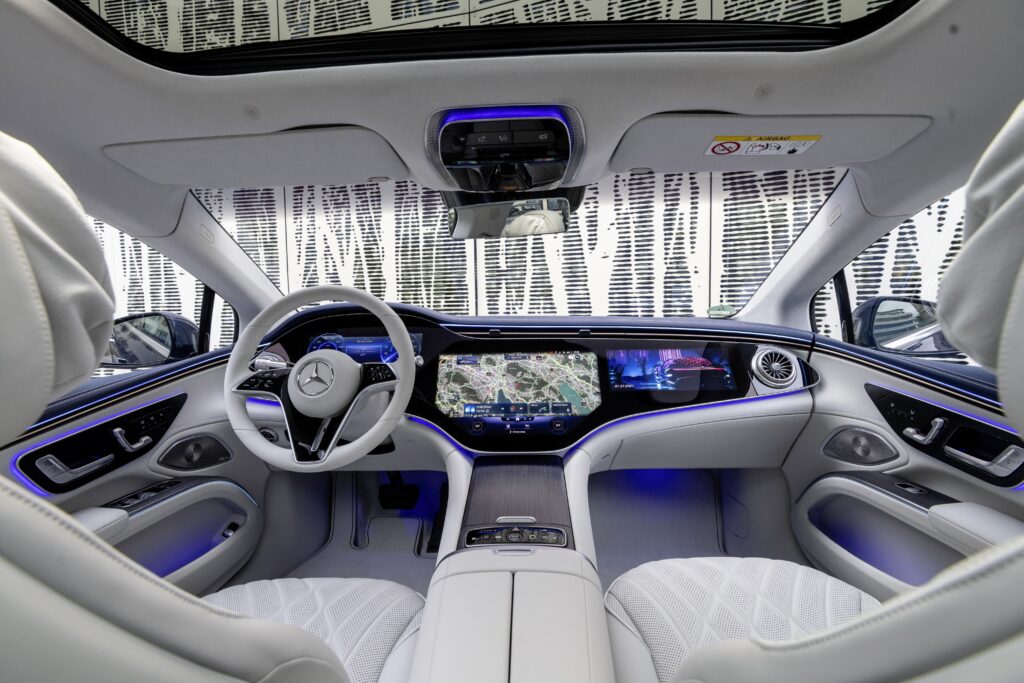
Mercedes-Benz is making significant strides in integrating AI into its vehicles. In fact, in 2023, Mercedes-Benz became the first automaker to gain U.S. approval for Level 3 autonomous driving. Yes, they even beat Tesla to the historic milestone.
The Mercedes-Benz Drive Pilot system represents the world’s first Level 3 system certified by the Society of Automotive Engineers, or SAE. Level 3 autonomous driving systems can manage most aspects of driving, including monitoring the environment, without human intervention. These are hands-off driving systems on certain roads.
Drive Pilot is powered by a spectrum of sensors, from LiDAR to rear window cameras and microphones. Who’s a major partner in Mercedes’ AI development? You guessed it: NVIDIA.

It’s not just autonomous driving that Mercedes is after. Now, Mercedes is bringing AI into infotainment and multimedia in the cabin. At the heart of the automaker’s AI innovation is the MBUX (Mercedes-Benz User Experience) Virtual Assistant. Debuting at CES 2024, this assistant leverages generative AI to deliver a highly personalized driving experience. The new system, integrated with the Mercedes-Benz Operating System (MB.OS), uses advanced 3D graphics powered by the Unity game engine, making the interactions more natural and visually engaging.
Mercedes-Benz has also integrated ChatGPT into its vehicles, enhancing the capabilities of the “Hey Mercedes” voice assistant. This integration allows for more natural and expansive conversations, handling a broader range of topics and providing more natural language interactions. In other words, Mercedes doesn’t want your voice assistant to sound like a GPS giving navigation instructions.
But it’s not just luxury cars getting into artificial intelligence. Another German automaker is now producing new cars with AI at a much lower price point.

Volkswagen is set to integrate OpenAI’s ChatGPT into its vehicles, starting from the second quarter of 2024. This integration, announced at the 2024 Consumer Electronics Show (CES) in Las Vegas, marks Volkswagen as the first mainstream traditional automaker to standardize ChatGPT across a broad range of models.
ChatGPT is an advanced AI language model developed by OpenAI that generates human-like text based on the input it receives. Powered by NVIDIA hardware, it utilizes deep learning techniques to understand and respond to a wide range of queries, providing accurate and contextually relevant information. Anyone can try ChatGPT for free at chat.openai.com.
The AI-based chatbot will be embedded within Volkswagen’s IDA voice assistant, which is activated by saying “Hello IDA” at any time. The ChatGPT integration will be available in various models, including the electric ID.3, ID.4, ID.5, ID.7, as well as the upcoming Tiguan, Passat, and Golf. The Volkswagen ID.4 is on sale today.
Volkswagen says that ChatGPT will enhance the functionality of the IDA voice assistant by enabling more natural conversations. Users will be able to ask a wide range of questions, from navigation assistance and climate control to general questions. Want to know about the history of the town you happen to be driving through? Soon, you’ll be able to ask your Volkswagen.
ChatGPT does not access vehicle data, and all interactions are securely deleted after processing. AI and personal privacy are growing concerns for more drivers as cameras and microphones become more commonplace inside the cabin.

Like it or not, more automakers are bringing AI to new cars in 2024 and beyond. Privacy concerns are not to be overlooked, but drivers have much to gain from newfound AI superpowers. From improving vehicle safety through predictive analytics to offering seamless and intuitive in-car experiences, the potential is limitless. Companies like Tesla, Mercedes-Benz, and Volkswagen are at the forefront of this revolution, setting new standards for what we can expect from our vehicles.
In a time of strange AI art, artificial song generators, and unsettling deep fakes, it’s comforting to see the positive side of artificial intelligence in our lives. AI is making our cars smarter, our drives safer, and our journeys more enjoyable.
One thing is certain: the future is getting weird!
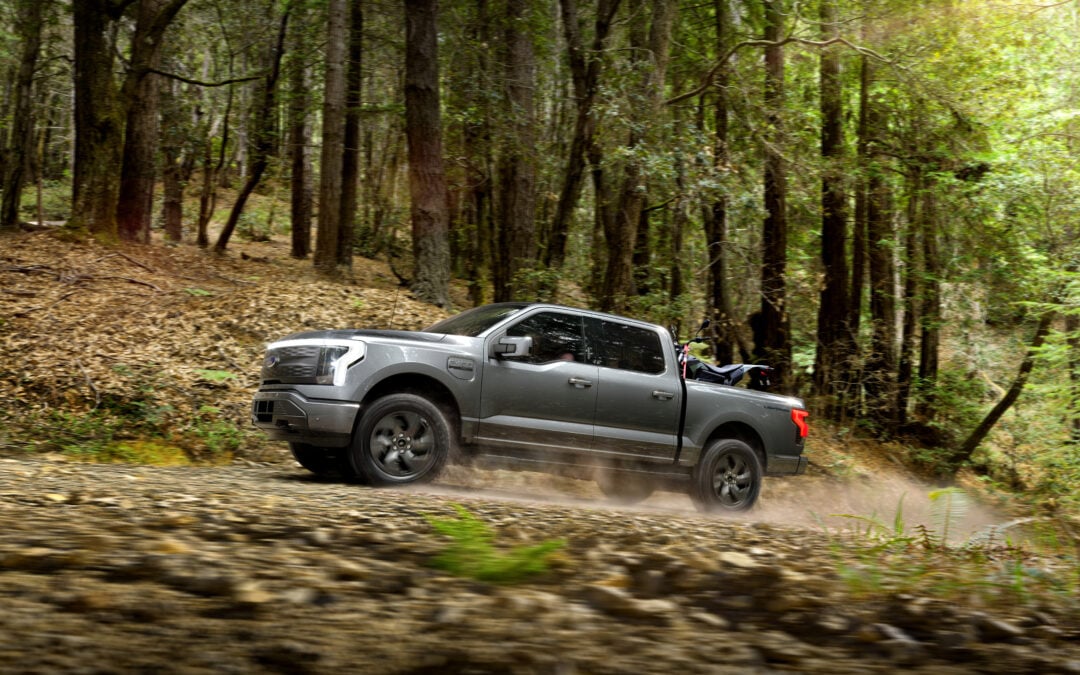
Electric vehicles are in the news for all the wrong reasons these days. Automakers are losing money as the clock ticks towards electrification goals set by the US government. Ford, who has struggled selling EVs to its core following, has gone so far as to cut two-thirds of the workforce at the Rouge Electric Vehicle Center in Dearborn, Michigan. But there’s good news, if you look beyond the headlines. Price cuts have come in waves, sending Ford’s EV prices falling. Ford’s EVs now have access to the Tesla Supercharger network, essentially fixing previous charging woes overnight. New numbers from CarEdge Data reveal that something is working, and Ford is selling EVs in higher numbers than ever before.
Here’s a closer look at Ford’s EV sales turnaround.

Over the course of March, Ford’s electric vehicle sales rates jumped 114%, as measured by running 45-day sales totals. For Ford, this is an unprecedented spike in EV sales.
For Ford’s first flagship EV, the Mustang Mach-E, sales rates are up 179% in just 30 days. In the 45 days leading up to March 1, 2024, 2,096 Mustang Mach-Es were sold in America. By March 30, the running total had climbed to 5,868 sold. This uptick in sales brough the Mustang Mach-Es market day supply down from 510 days at the start of March, to 137 days by the end of the month.
The best-selling electric truck in America, the F-150 Lightning, also saw sales rise last month. The Lightning’s 45-day running sales total climbed from 2,193 sales leading up to March 1, all the way to 3,334 sales by the end of the month. Ford’s electric truck sales jumped 52% in just three weeks.
For both models, nearly all sales were for the remaining 2023 models. 2024 models are just now arriving on dealer lots, making up just 19% of Ford’s EV lot inventory on April 1.
Who is Ford to thank for their accelerating EV sales, their pricing strategy, or Tesla? Perhaps it’s a little bit of both.
On February 29, Ford announced that all of its EV owners have access to Tesla’s Supercharger network. To the uninitiated, this may not sound like much news at all. But for any non-Tesla EV driver (like myself), it’s a big deal. Tesla may have its faults, but one of its many strengths is its charging network. Frankly, most other charging networks are horrible. Until now, the Tesla Supercharger network has been reserved for Tesla drivers only. Now, first with Ford and then with Rivian, Tesla is opening up access to other automakers.
Here’s a look at the current extent of the Tesla Supercharger network in 2024:

At last, reliable EV charging has arrived for Ford’s customers (as long as they have an adaptor, provided free of charge by Ford). But there’s more to this story than easy charging.
Just how far have Ford’s EV prices fallen recently?
As of April 1, the average selling price for a new Ford Mustang Mach-E is $52,927. At the start of 2024, the Mustang Mach-E’s average transaction price was $56,546. That’s a 6.4% price drop, all within a few months.
For the F-150 Lightning, average transaction prices fell from $71,118 at the beginning of 2024 to $66,391 by the end of the first quarter. That is also a 6.4% drop over three months.
Ford’s used EV prices have taken quite the tumble, too. Used F-150 Lightning prices are down 13.8%, and the Mustang Mach-E’s average used sale prices are down 10.5% in the first quarter of 2024.
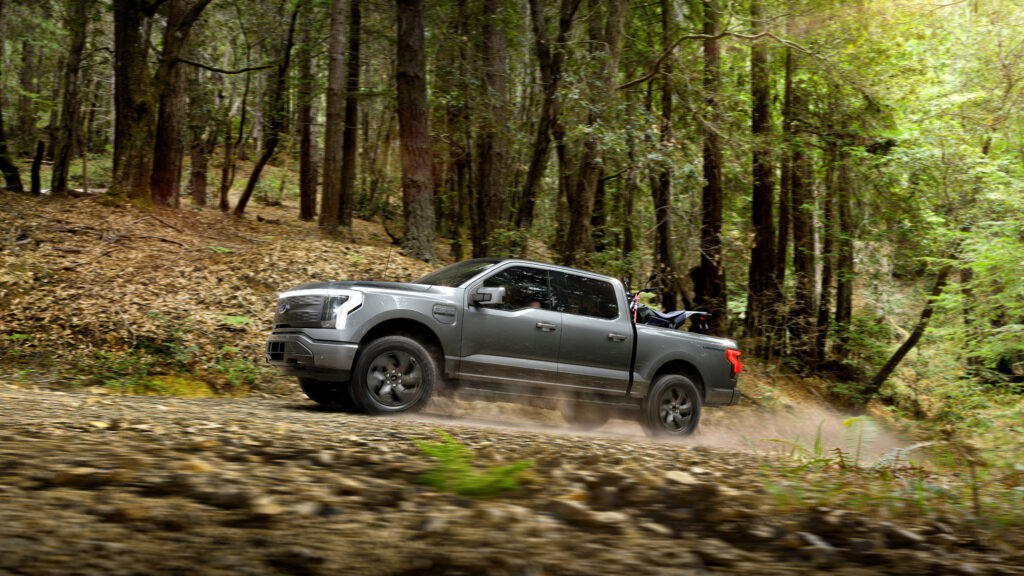
EV skeptics repeat two major obstacles that keep them hesitant to make the switch: access to reliable charging, and high prices. In the span of a month, Ford has addressed both of these pain points. This is great news for EV buyers, and also something that Ford is surely happy to see.
Will the good news continue for Ford? It’s far too soon to tell. The remainder of 2024 will prove to be a make-or-break time for not only Ford, but all electric vehicle makers. But it’s safe to say that lower prices and better charging are two big steps in the right direction.
Want to do your own local market research? CarEdge Data is for you.
See the latest EV market share update here for more details.

Looking to get into a new vehicle for the least amount of money possible? We’re here to help. Despite new car prices remaining near record highs, affordable lease options remain as automakers look to move inventory. Surprisingly, there are several new car leases under $200/month. Bump your budget up to $250/month, and you have plenty to choose from. From sedans to EVs and popular crossover SUVs, these are the cheapest lease deals for October shoppers.

Buick Envista: $199 per month for 24 months with $3,869 due at signing
Buick Encore GX: $333/month for 36 months with $0 due at signing (for returning lessees of GM vehicles)
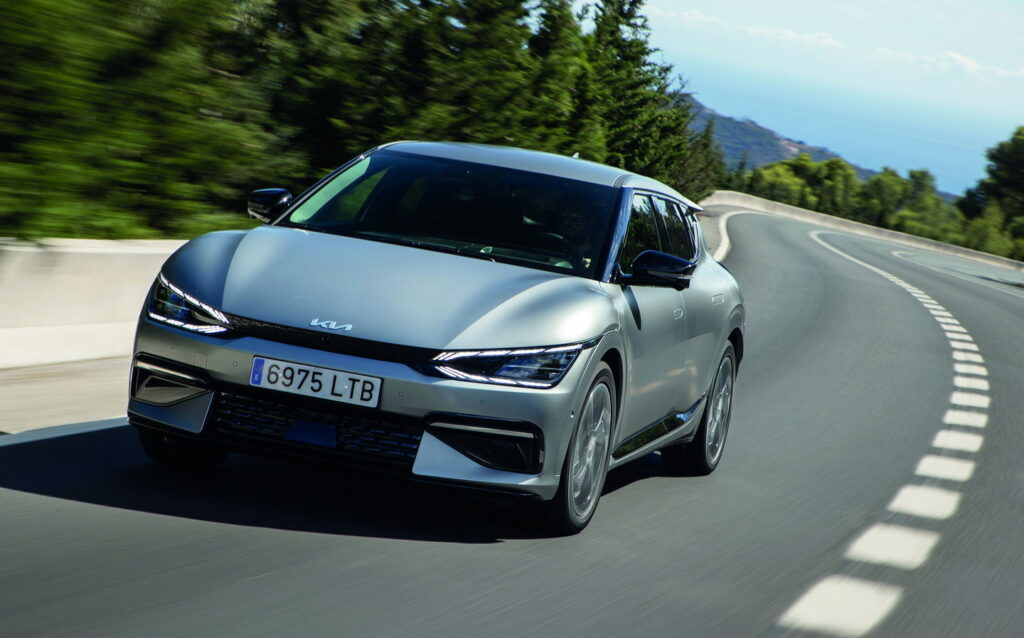
Kia Forte: $199/month for 24 months with $3,499 due
Kia EV6: $249/month for 24 months with $3,999 due
Kia Seltos: $239/month for 24 months with $3,499 due

Chevrolet Trax: $249/month for 24 months with $2,769 due
Chevrolet Trailblazer: $299/month for 36 months with $1,799 due
Chevrolet Equinox: $299/month for 36 months with $1,369 due
Say goodbye to negotiating and dealerships when you buy or lease your Chevrolet with CarEdge. Learn how it works.
Subaru Legacy: $269 per month for 36 months with $3,255 due
Subaru Crosstrek: $299 per month for 36 months with $2,549 due
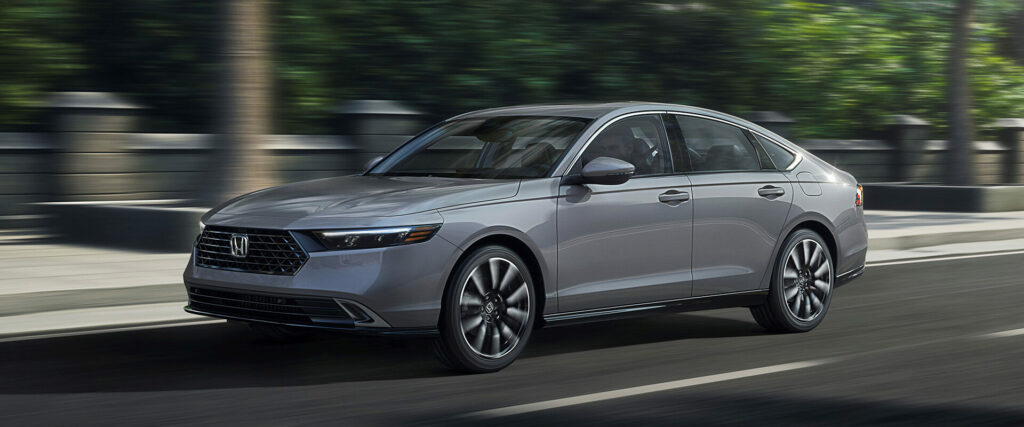
Honda Civic: $239 per month for 36 months with $3,399 due
Honda Accord: $249 per month for 36 months with $3,499 due
Hyundai IONIQ 5 SE: $196 per month with $3,986 due
Hyundai Elantra: $199 per month with $3,499 due
Hyundai Venue: $229 per month with $3,499 due
Hyundai Kona: $232 per month with $4,012 due
Skip the dealership and buy or lease your next Hyundai with CarEdge. Learn how it works.
Kia Seltos: $199/month for 24 months with $3,369 due
Kia Forte: $179/month for 24 months with $3,434 due
Kia EV6: $209/month for 24 months with $3,870 due

2024 Mazda CX-30: $239 per month for 36 months with $2,999 due
Say goodbye to negotiating and dealerships when you buy or lease your Mazda with CarEdge. Learn how it works.
Nissan Sentra: $289/month for 36 months with $2,529 due
Nissan Altima SV: $269 per month for 36 months with $3,209 due
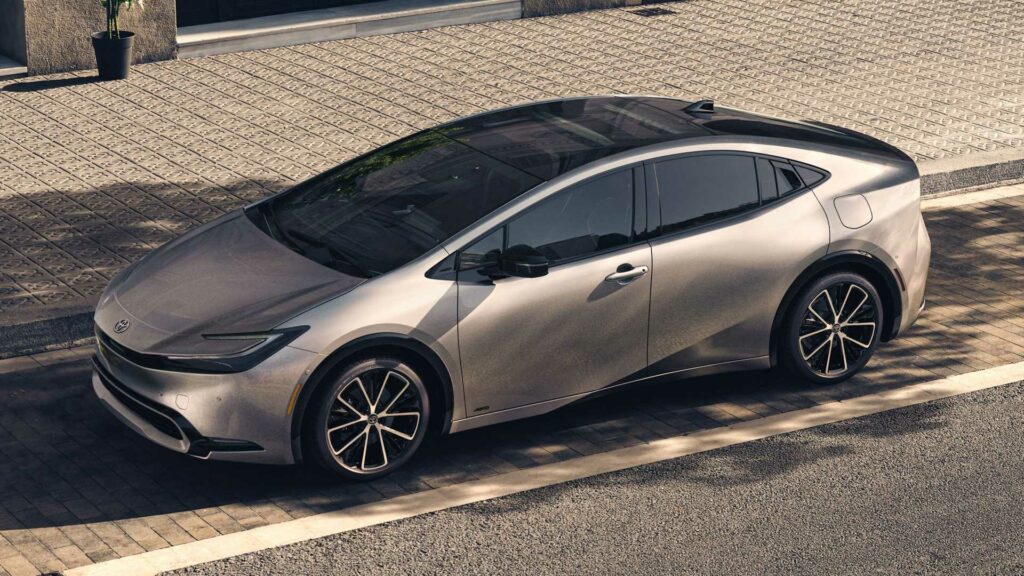
Toyota bZ4X: $359 per month for 36 months with $0 due.
Toyota Tacoma SR5: $449/month for 36 months with $0 due
Toyota Corolla: $259 per month for 36 months with $3,499 due
Toyota Prius: $299 per month for 36 months with $3,999 due

2024 Jetta: $239/month for 36 months with $3,499 due
2024 Taos: $269/month for 36 months, $3,999 due
2024 Tiguan: $229/month for 36 months, $4,199 due
Whether you prioritize fuel efficiency, space, or the latest technology, the cheapest lease deals prove that you can have it all. Remember to act quickly, as these deals expire at the end of the month.
Ready to skip the BS and lease the easy way? Do it all from the comfort of home with CarEdge. With home delivery available (free in select areas) and our famous pre-negotiated pricing, we’ll simply deliver the car you want to your door.

What makes EV ownership enjoyable? Fast charging, long range, and good reliability. In 2024, there’s a wider selection than ever in the search for affordable electric vehicles that won’t disappoint. Each offers a unique set of strengths, from the Tesla Model 3’s refreshed design and competitive total cost of ownership to the IONIQ 5’s ultra-fast charging. Plus, several cheap electric cars qualify for the revised federal tax credit. Here’s the need-to-know for America’s 5 best cheap electric cars and crossovers on sale in 2024.
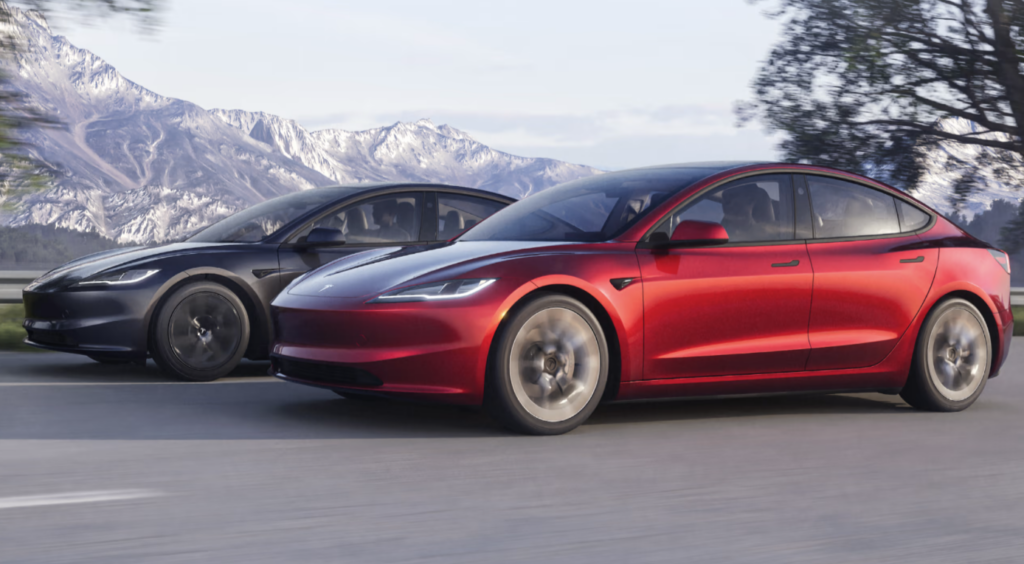
Price: Starting at $40,380 with destination fees
Range: 272 miles
Charging Speed: Charging speeds up to 170 kW, adding up to 160 miles in 20 minutes
Federal tax credit: Does not qualify due to new battery sourcing for the Model 3.
In 2024, the Tesla Model 3 was fully refreshed for the first time since its launch in 2017. However, due to battery mineral sourcing, the Model 3 no longer qualifies for the federal EV tax credit. Learn which models do qualify here. However, at this sub-$40,000 price, the Model 3’s fuel savings make it surprisingly competitive with a Toyota Camry when looking at total cost of ownership.
See pre-owned Tesla Model 3 listings with local market data
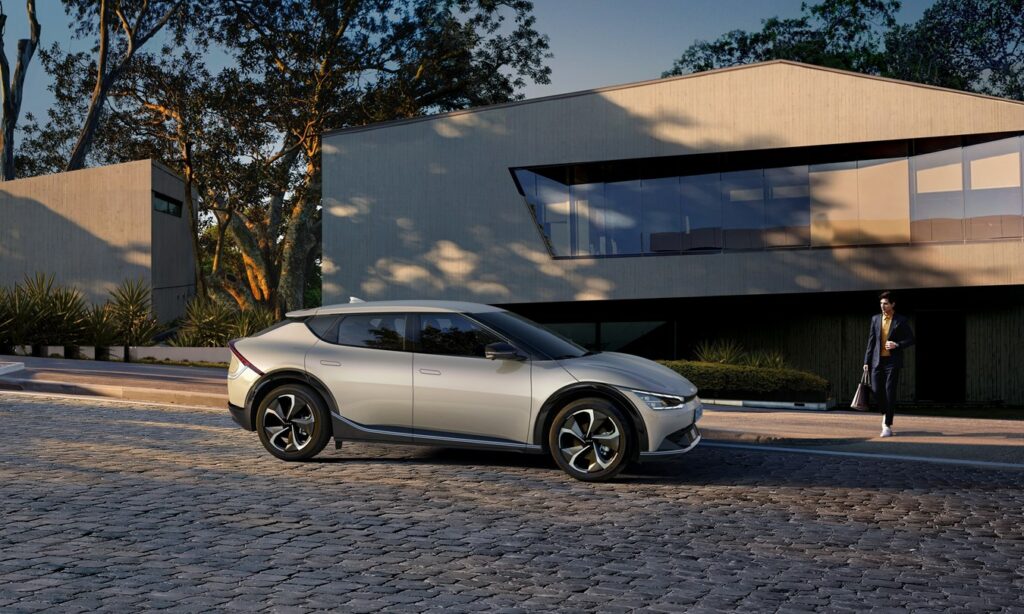
Price: Starting at $43,975 with destination fees
Range: 232 miles (EV6 Light Rear-Wheel Drive)
Charging Speed: Up to 230 kW speeds (adding 160 miles of range in as little as 18 minutes)
Federal tax credit: No, the EV6 does not qualify in 2024. It is currently built in Korea.
Get up to 310 miles of range with the higher-spec Light Long Range RWD, which starts at $45,950. The EV6 has won multiple awards, and is much-loved by owners. It charges VERY fast at public DC fast chargers, which comes in handy on road trips.
See pre-owned Kia EV6 listings with local market data

Price: Starting at $45,380 with destination fees
Range: 260 miles
Charging Speed: Up to 170 kW speeds (adding up to 160 miles in 20 minutes)
Federal tax credit: Yes, all Model Ys qualify. The tax credit is subject to household income limits. Learn more.
The Tesla Model Y is the best-selling EV in America in 2024. Prices have fallen by $20,000 over the past two years, and the federal EV tax credit has returned with the passage of 2022’s Inflation Reduction Act. The Model Y’s greatest strength is perhaps the Supercharger network, which takes the hassle out of charging. Along with the Model 3, this Tesla is the perfect choice for newcomers to the EV lifestyle, as long as you don’t mind the minimalist interior.
See pre-owned Tesla Model Y listings with local market data

Price: Starting at $44,795 with destination fees
Range: 247 miles
Charging Speed: Up to 115 kW speeds (adding up to 160 miles in 30 minutes)
Federal tax credit: Yes, the Mustang Mach-E qualifies for the federal EV tax credit (income limits apply). Learn more.
There’s an extreme oversupply of Mustang Mach-Es on Ford dealership lots right now. It’s an amazing EV, though Ford just built too many of them too fast. See the new cars with the most and least inventory.
See Ford Mustang Mach-E listings with local market data
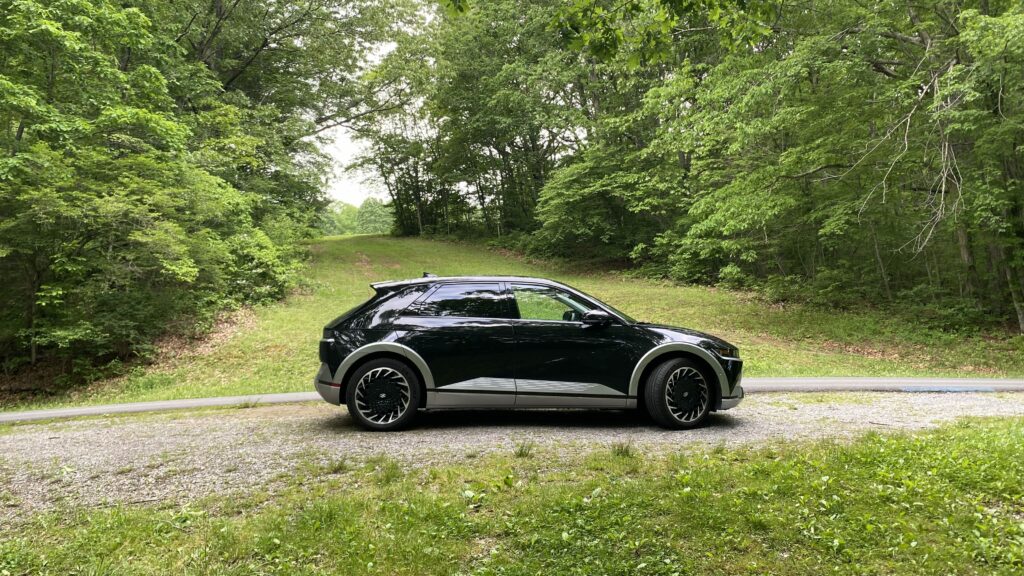
Price: Starting at $44,580 with destination fees
Range: 220 miles (SE Standard Range)
Charging Speed: Up to 230 kW speeds, adding up to 160 miles in 18 minutes
Federal tax credit: Sadly, the IONIQ 5 does not qualify for the federal tax credit. It is built in Korea. However, Hyundai is building an EV production plant in Georgia, which should return eligibility later this decade.
The cheapest IONIQ 5, the SE Standard Range, is rare here in the United States. That’s not such a bad thing when you consider that for just $4,000 more, you can get 303 miles of EPA-rated range. I own an IONIQ 5 Limited AWD, and after two years and 40,000 miles, I still love it. It’s the best car I’ve ever had. If you travel at least a few times a year, I highly recommend upgrading to the longer-range options.
See Hyundai IONIQ 5 listings with local market data
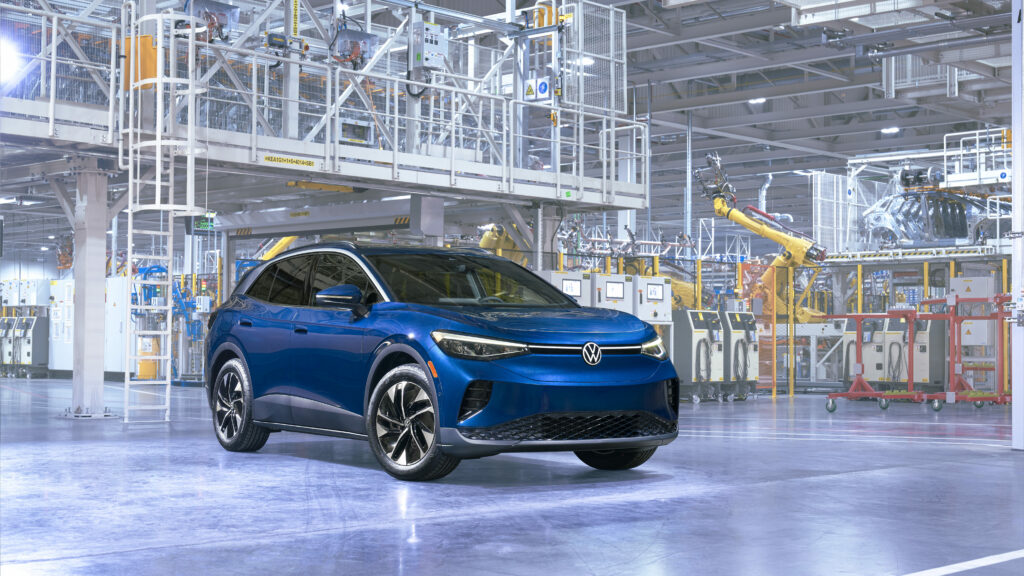
Price: Starting at $40,290 with destination fees
Range: 209 miles (ID.4 Standard)
Charging Speed: Up to 140 kW speeds (adding up to 160 miles of range in 40 minutes)
Federal tax credit: Yes, all ID.4s made in America qualify. Verify that your VIN was an American build. Learn more.
There are two reasons why the ID.4 didn’t quite make the top 5: slower charging and less range. If you rarely take long-distance road trips, or you are especially patient, the ID.4 is not a bad choice. The Volkswagen ID.4 is now built in Chattanooga, Tennessee. That’s great for many reasons, but especially because the ID.4 now qualifies for the $7,500 federal tax credit (income limits apply). Need more range? For $43,995, you can get 275 miles of range with the ID.4 Pro.
See Volkswagen ID.4 listings with local market data
In 2024, we’re seeing a gap in Bolt production as Chevrolet launches the faster-charging but more expensive Equinox EV, and re-tools a production facility in Kansas to bring the next generation of the Bolt EV to life in 2025. The Bolt was super affordable, starting well under $30,000 before the tax credit. However, it charges painfully slow for frequent travelers. However, there are a few 2023 Bolt EVs left on the market. You can check them out here.
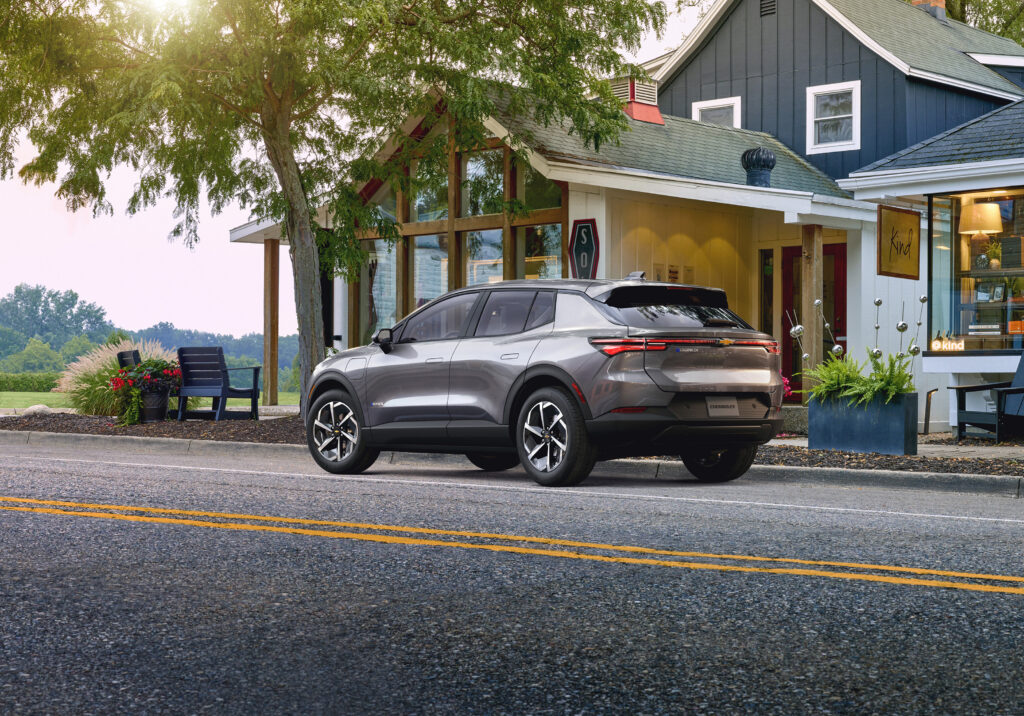
The Equinox EV simply hasn’t arrived yet. It’s starting price was just announced at $34,995, but it will be far more capable than the last generation’s Chevy Bolt. Expect a larger, faster-charging EV for about $7,000 – 10,000 more than the Bolt.
Why not the Nissan LEAF? Sadly, Nissan continues to produce the LEAF with outdated hardware. Even in 2024, the LEAF includes a charging standard that the rest of the industry has long since moved on from. It’s called the Chademo plug, and you’re in for some serious inconveniences if you travel at all in a Nissan LEAF. For that reason, we can’t recommend the LEAF until Nissan finally switches over to either CCS or NACS charging standards.
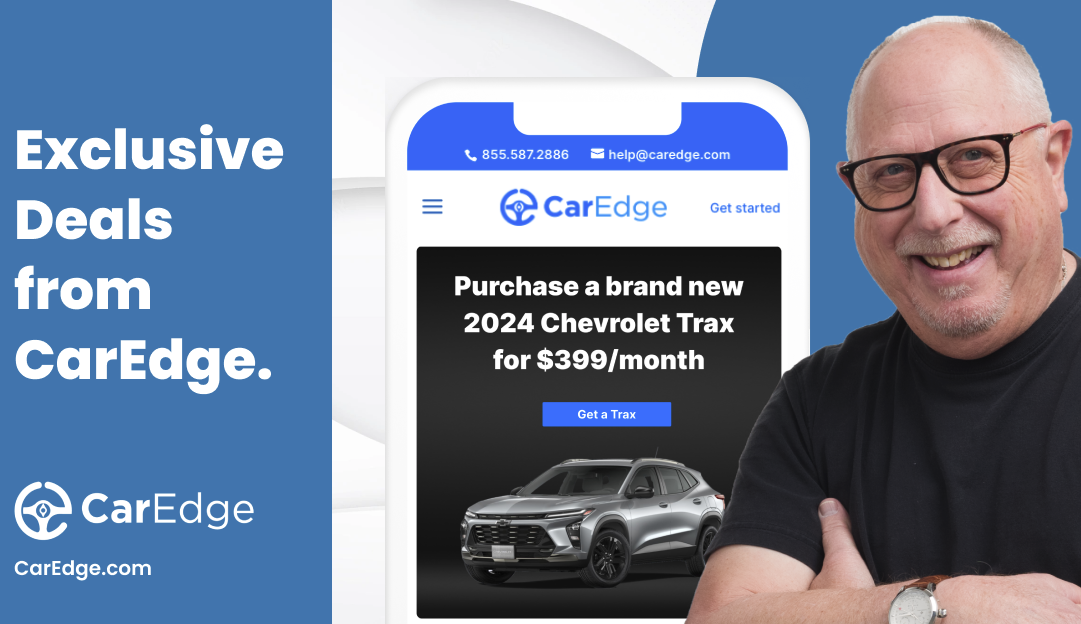
Drivers despise haggling with salespeople. From bait-and-switch pricing to misleading online prices, there’s a lot to dislike about the whole experience. It’s no surprise that just 26% of car buyers think that the car buying process is transparent. In the age of online shopping, wouldn’t it make sense to buy your next car online? Today, there’s a better way to find the perfect vehicle at the right price. Here’s how CarEdge is taking no-haggle car buying to the next level.
Price transparency is a real problem in car buying. We hear horror stories from car shoppers all the time. It’s about time that someone did something about it. Here at CarEdge, our team set out to find a lasting solution to car buying woes. The result was the launch of a new way to buy a car: pre-negotiated, no-haggle car pricing through a network of vetted car dealers.
By choosing to only work with honest car dealers with stellar reputations, CarEdge is changing the way Americans buy cars. Imagine this: you browse for cars online, find the vehicle you want at a price you’re happy with, and then connect with your personal Concierge who will take it from there. Days later, your car is delivered to your driveway.
How does CarEdge work? Is there a catch? Next, we’ll lay out the entire process, from start to finish.
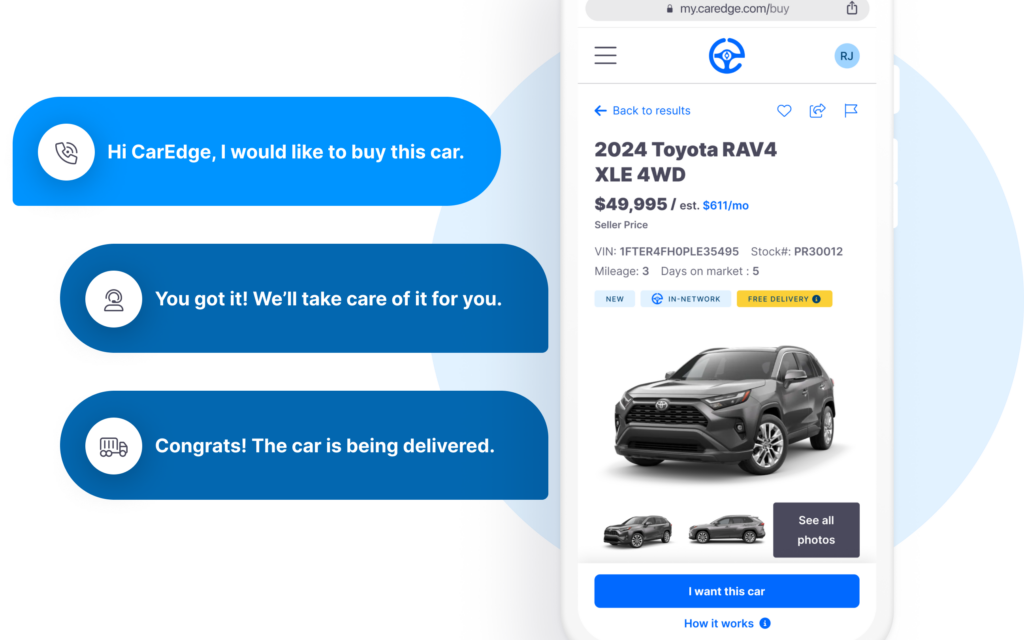
Buying a car through CarEdge involves a stress-free process that’s managed entirely from the comfort of your home. Here’s an overview of how it works:
👉 For more information, visit CarEdge’s How It Works page.

On average, drivers who buy with CarEdge save a few thousand dollars on their new car. In many cases, CarEdge is able to source the exact vehicle a customer wants (make, model, year, trim, and even color), for thousands of dollars less than you’ll find elsewhere. CarEdge even has below-invoice deals (that’s far below MSRP!).
We welcome you to browse hundreds of real, unfiltered CarEdge reviews at the CarEdge Community Forum. See how much you could save in time, money, and hassle!
Got questions or want more information about no-haggle car buying with CarEdge? Simply want to talk to our team of experts? We’re here to help! We’re real people here to save you real money. Feel free to reach out to us at [email protected] with any inquiries or for further assistance.